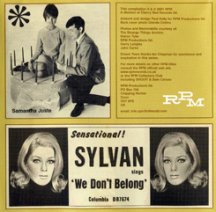
Somewhere inthe middle, it suddenly and very briefly, changes tempo into what seems as if it will become a conventional Presto It, too, features a highly ornamented line for the first violin.

Its major key, however, keeps it from being overly plangent. The Finale, normally a jolly affair in Haydn’s world, begins with a protracted Adagio introduction, virtually a movement unto itself. The Trio in C minor returns to the somber mood. On the other hand, theĪttaca transitions into the Minuet, suggesting almost as if he were catching himself in amoment of self-indulgence as his musician moved on to greater things. Moreover, its melodies are considerably more modal and ethnically Hungarian, a reminder of Tost’s nationality. It is almost as if he was mourning the loss of Tost, while toasting him at the same time. The first movement is fairly upbeat in mood, but the second movement Adagio in C minor is one of the most melancholy in Haydn’s entire oeuvre. Although he was famous for smoothly integrating all four instruments into the string quartet, in this case, the first violin takes precedence in all four movements. This Quartet, however, suggests some narrative – even autobiographical – elements that were certainly not out of character for Haydn. That said, he was also never one to wear his heart on his sleeve. Though his musical fingerprint is often immediately apparent, even when compared with the music of his contemporaries, he was always tweaking conventions. Haydn was one of those composers who seldom wrote music by formula or self-borrowing – a common occurrence even among the greatest composers. Tost’s machinations, however, were in the future, and Haydn was sorry to see him leave Esterháza. Symphony by one Adrian Gyrowitz as being by Haydn. The story goes that Tost was none too honest in transferring the royalties to his former boss and even tried pawning off a Hoping to have them published, and thereby more widely circulated in Paris, Haydn entrusted them Tost. 54 & 55, the quartets dedicated to Johann Tost, violinist in the Esterháza orchestra, who left in 1788 for a stint in Paris. 88 & 89) and the two sets of three string quartets, Op. The story goes that capitalizing on this success, he followed up with two more symphonies (nos. In 1785-86 Haydn had scored a musical coup in Paris with his six “Paris” symphonies (nos. By that time Haydn’s music was all the rage throughout Europe, and it was a jewel in the Prince’s crown that such a famous and sought-after composer was in his Rather, they were self-motivated and meant for the general public.

The 25 string quartets Franz Joseph Haydn composed during the 1780s were not part of his duties as Kapellmeister to Prince Esterházy. Before returning to the minuet, Shaw interjects a transition in which the strings transform into organic voices of the natural world.Įntr’acte concludes with a long coda in the more organic soundscape. The second trio, played bowed, follows a similar but shorter trajectory. The first trio explores the pizzicato capabilities of the strings, opening with a modal, “Renaissance” theme, which also careens off into another musical universe.
#PIZZICATO SYLVAN FREE#
But then, the section veers off course into atonality and free rhythm. Shaw’s so-called “minuet” retains an appropriate Classical structure (two strains, repeated in the beginning and without repeats at the end).
#PIZZICATO SYLVAN SERIES#
It is structured like a minuet with two trios but creates a series of time warps, Classical music displaced a couple or more centuries in all directions. Shaw composed Entr’acte in 2011 for string quartet, revising it and in 2014 for string orchestra. In 2013 she was the youngest ever recipient of the Pulitzer Prize for music for her Partita for 8 Voices. Violinist, singer and composer Caroline Shaw comes from Greenville, NC and studied at Rice Yale and Princeton University.


 0 kommentar(er)
0 kommentar(er)
